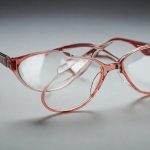1.75 eyesight is considered as bad eyesight because it falls within the range of moderate myopia or nearsightedness. Having 1.75 eyesight is considered bad as it falls within the range of moderate myopia or nearsightedness.
This means that individuals with this level of eyesight have difficulty seeing objects that are far away. It is important for people with 1. 75 eyesight to consult with an eye care professional to determine the appropriate corrective measures, such as wearing glasses or contact lenses, to improve their vision.
Untreated myopia can lead to eye strain, headaches, and may progress over time. Therefore, it is crucial to address bad eyesight to maintain optimal eye health and clear vision.
What Does 1.75 Mean For My Prescription Eyewear?
1. 75 in prescription eyewear indicates a moderate level of nearsightedness or farsightedness. It’s not considered bad eyesight, but you may require corrective lenses for clear vision.
When it comes to understanding your prescription eyewear, it’s important to know what different numbers and terms mean. If you have been told that your eyesight is 1. 75, you may be wondering what exactly that means for your eyewear.
Let’s take a closer look at what this prescription indicates and how it can affect your vision.
Understanding The Numbers:
- Prescription eyewear uses numbers to determine the strength of lenses needed to correct your vision.
- The number 1.75 refers to the diopter measurement, which indicates the lens power required to focus light properly onto your retina.
- A positive diopter value such as 1.75 means that you have difficulty seeing objects that are far away, also known as myopia or nearsightedness.
- The higher the number, the stronger the prescription and the greater the level of nearsightedness.
Impact On Your Eyewear:
- A prescription of 1.75 means that you will need prescription lenses that have a power of -1.75 diopters to correct your nearsightedness.
- Prescription eyeglasses with negative diopter values are designed to help you see objects in the distance more clearly.
- Contact lenses can also be prescribed with a power of -1.75 diopters to correct your vision.
- Your eyewear will be crafted to precisely match your prescription, ensuring optimal vision correction and clarity.
Choosing The Right Frames:
- With a prescription of 1.75, you have a moderate level of nearsightedness, so you can choose from a wide range of frame options.
- Frames for nearsighted individuals often have thinner lenses at the center, gradually thickening toward the edges to correct the distorted appearance caused by refractive errors.
- Consider selecting frames that complement your face shape and personal style, as there are various frame designs and colors to choose from.
Regular Eye Exams:
- To ensure that your prescription remains accurate and up to date, it is essential to schedule regular eye exams.
- Your prescription may change over time, so getting your eyes checked annually or as advised by your eye care professional is crucial.
- Regular eye exams can also detect any potential eye health issues that may require early intervention.
Remember, understanding what 1. 75 means for your prescription eyewear can help you make informed decisions when it comes to selecting eyeglasses or contact lenses. Always consult with your eye care professional for personalized guidance and recommendations based on your specific vision needs.
1.75 Vision Power Comes Under Normal Eye Sight Category?
1. 75 vision power falls within the range of normal eyesight, indicating mild nearsightedness.
When it comes to eyesight, many people wonder what different vision powers mean and whether they fall under the normal eyesight category. One such number that often confuses individuals is 1. 75. In this section, we will explore whether 1.
75 vision power is considered normal.
Understanding 1.75 Vision Power:
To comprehend what 1. 75 vision power means, it is essential to understand the metric used to measure eyesight. Vision power, also known as refractive error, is represented in diopters (D). It indicates the degree of nearsightedness or farsightedness a person may have.
Here’s what you need to know about 1. 75 vision power:
- 1.75 vision power falls under the category of mild to moderate myopia (nearsightedness). Myopia refers to the inability to see distant objects clearly, while close objects can still be seen with clarity.
- People with 1.75 vision power may experience blurriness when looking at things in the distance, such as road signs or movie screens. However, they are likely to have relatively clear vision when focusing on objects that are nearby.
- It’s important to note that 1.75 vision power can vary between individuals. Some may find it more challenging to see distant objects clearly, while others may have fewer difficulties.
Factors Affecting Visual Acuity:
Vision power is influenced by various factors, and it is essential to consider these when determining the significance of 1. 75 vision power. Here are some factors that can affect visual acuity:
- Age: As individuals age, their eyes naturally change, which can impact vision. Presbyopia, a condition that affects near vision, is common among individuals aged 40 and over.
- Genetics: Family history plays a role in determining vision quality. If your parents or siblings have myopia, you are more likely to develop it as well.
- Environment: Activities that involve prolonged close-range focus, such as reading or using electronic devices, can strain the eyes and potentially contribute to myopia progression.
Consulting An Eye Care Professional:
It is important to consult an eye care professional, such as an optometrist or ophthalmologist, to determine the significance of 1. 75 vision power in your specific case. They will conduct a comprehensive eye examination, assess your visual acuity, and provide tailored recommendations based on your individual needs.
Keep in mind that every individual’s eyesight is unique, and what may be considered normal for one person may differ for another. Regular eye check-ups and timely professional advice are crucial for maintaining good eye health and ensuring optimal vision.
Remember, understanding your eyesight and receiving appropriate guidance from a qualified eye care professional is key to maintaining healthy vision.
How Strong Is My Eye Prescription
1. A prescription of 1. 75 indicates mild to moderate nearsightedness or farsightedness, but it’s not considered bad eyesight. 2. With a prescription of 1. 75, your eyesight may have some blur, particularly in the distance, but it’s manageable with corrective lenses.
Imagine squinting your eyes to read a road sign or struggling to focus on objects in the distance. It’s frustrating, right? Poor eyesight can significantly impact your daily life, but understanding the strength of your eye prescription can help you navigate the blurry world.
In this section, we will delve into the details of eye prescriptions and demystify the jargon.
What Do The Numbers Mean?
An eye prescription consists of numbers, often referred to as diopters, which indicate the strength of your prescription. These numbers signify how much correction your eyes need to achieve clear vision. Let’s break it down:
- Sphere (SPH): This measures the lens power needed to correct myopia (nearsightedness) or hyperopia (farsightedness). A negative number (-) indicates myopia, while a positive number (+) suggests hyperopia.
- Cylinder (CYL): The cylinder value addresses any astigmatism in your eyes. Astigmatism occurs when the eye has an irregular shape, causing blurred vision. A higher cylinder value means more astigmatism correction.
- Axis: This number signifies the orientation of the astigmatism correction. It ranges from 1 to 180 degrees.
Deciphering The Clarity
Now that you understand the components of an eye prescription, let’s determine the strength of your prescription. The sphere value is essential in this process:
- Low prescription: If your sphere value ranges from 0.25 to 3.00 diopters, you have a mild prescription. This indicates slightly blurred vision and generally doesn’t require strong lenses.
- Moderate prescription: Sphere values between 3.25 and 6.00 diopters fall under the moderate category. Here, the blurriness is more pronounced, and you may require stronger lenses.
- High prescription: A sphere value above 6.00 diopters indicates a high prescription. This suggests severe nearsightedness or farsightedness, and you may require significantly stronger lenses for clear vision.
Remember, the cylinder value and axis play a crucial role in determining the overall strength of your prescription. Higher cylinder and axis values may indicate additional visual challenges that need to be addressed.
Consulting An Eye Care Professional
Understanding the strength of your eye prescription is essential, but accurate diagnosis and prescription should always be sought from a qualified eye care professional. They will conduct comprehensive tests to determine your precise vision needs. Book an appointment with an optometrist or ophthalmologist to ensure the correct course of action.
Knowing the strength of your eye prescription helps you make informed decisions about your vision correction options. From mild to high prescriptions, understanding the numbers and jargon brings clarity to your eye care journey. Embrace the power of knowledge, take control of your vision, and explore the possibilities that lie ahead.
Frequently Asked Questions For Is 1.75 Bad Eyesight
Is 1.75 A Strong Eye Prescription?
A prescription of 1. 75 is considered a moderate eye prescription.
How Bad Is Minus 1.75 Eyesight?
Minus 1. 75 eyesight is considered moderate nearsightedness and may require corrective lenses for clear vision.
How Strong Is 1.75 Glasses?
1. 75 glasses indicate a moderate level of prescription strength for vision correction.
Is Minus 1.5 Eyesight Bad?
Having a -1. 5 eyesight can be considered as relatively poor vision.
Conclusion
1. 75 is not necessarily indicative of bad eyesight. It is a common misconception that 1. 75 is a severe condition, but the truth is that eyesight can vary greatly from person to person. While a person with perfect 20/20 vision may see things more clearly, those with 1.
75 vision can still function well and lead normal lives. It’s important to remember that eyesight is measured on a spectrum, and what matters most is how well you can see and how it affects your daily activities. If you are experiencing difficulties with your eyesight, it is always recommended to consult with an optometrist or ophthalmologist for a professional evaluation and appropriate recommendations.
Taking care of your eyes through regular eye exams, proper hygiene, and adopting healthy habits can help maintain and improve your vision regardless of your prescription. Remember, everyone’s eyesight is unique, and what matters most is taking the necessary steps to ensure your eyes are in good health.
















